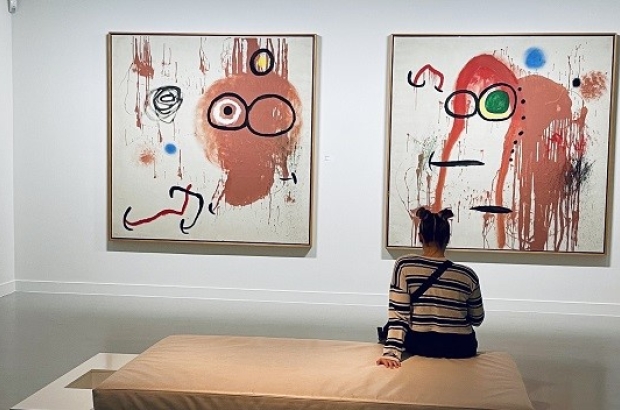- Daily & Weekly newsletters
- Buy & download The Bulletin
- Comment on our articles
Joan Miró exhibition at Mons: Colour, joy and pure abstraction by the Catalan artist
Continuing its commitment to showing both surrealist and major 20th-century international artists, BAM (Beaux-Arts Mons) presents Joan Miró: The Essence of Past and Present Things.
Curated by British art historian Victoria Noel-Johnson, some 100 paintings, prints, sculpture and ceramics show Miró’s creative and singular journey through modernist art movements, from fauvism and cubism to abstraction and surrealism.
Throughout these explorations, he maintained a life-long connection with the past, his Catalan heritage and the art world’s great masters. For BAM’s director Xavier Roland, the exhibition reveals Miró’s “profound respect for the past… and a poetic reality at the heart of his work”.

Born in Barcelona in 1893, and benefitting from an extensive fine art education, his style may have radically changed during his prolific 70-year career, but Miró’s continual search for this essence inspired the title of the exhibition.
The artist famously stated in 1927 that he wished “to assassinate painting” in a bid to dismantle classical forms of representation as he focused endlessly for “the spirit itself” of objects and emotions.
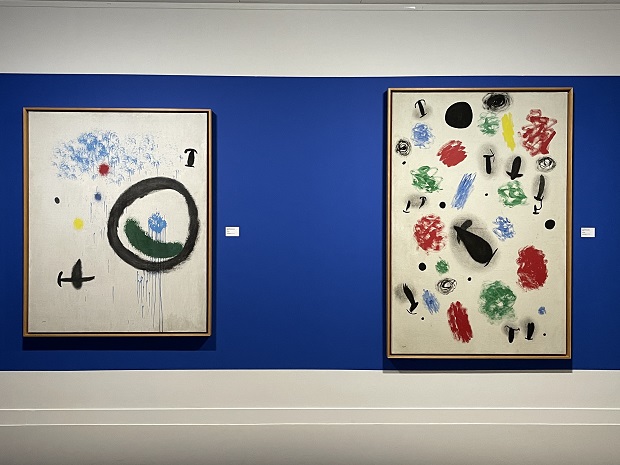
In the process, he pioneered a signature visual language: pictorial signs, biomorphic forms, geometric shapes, and abstracted and semi-abstracted objects. Whatever the medium, he employed a light and varied touch to produce colourful dreamy and sometimes childlike works. The Spanish artist remains an influential figure.
Divided into six sections that are more or less chronological, the exhibition also unveils known aspects of Miró’s work. The addition of interactive digital installations reveal how one early landscape was subsequently covered with a layer of paint and how he recreated shapes and symbols by artists such as Bosch and Raphaël.
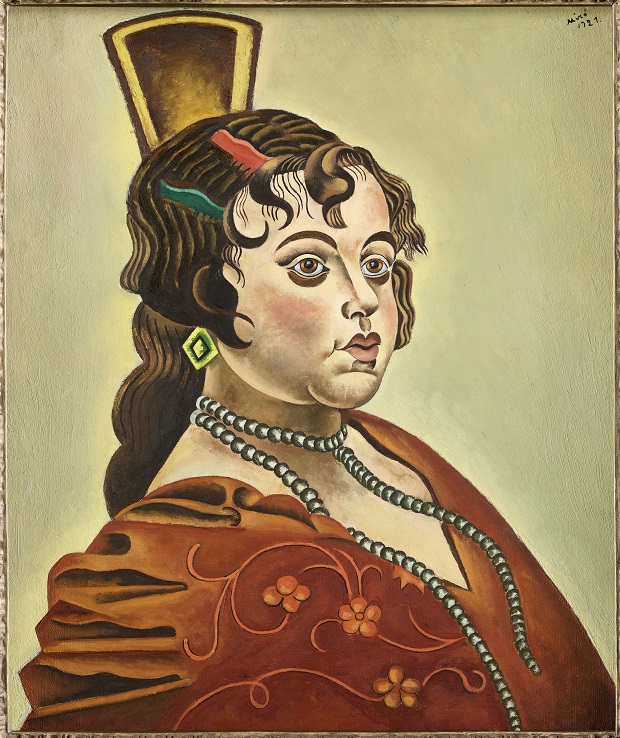
The opening space features four paintings that epitomise his quest for the spirit of his subject matter. Each portrait is a representation of a woman, a life-long thematic. The first, Portrait of a Spanish Dancer (1921; pictured), which once belonged to Picasso, is followed by later works revealing his experimentation with surrealism and distillation of figures and objects.
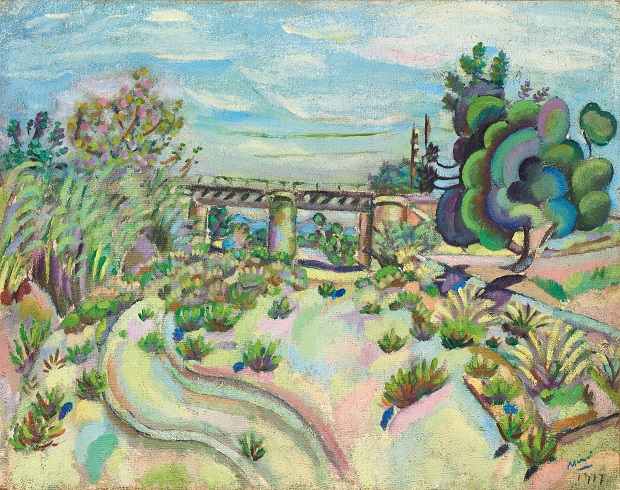
In the first section, dedicated to early Catalan fauvism, there are surprise paintings from the beginning of his career. Testament to his profound love for his region, The Bridge at Mont-roig (1917, pictured) is one of many works painted at the coastal village where his family had a holiday home. Its pastel colours and fluid shapes resonant of artists like Cezanne.
Miró amassed a large collection of art books and postcards; a small selection is on display, many originating from his final home and studio in Majorca. They served as a reference for the artist who drew inspiration from early cave paintings as well as Italian and Dutch masters.
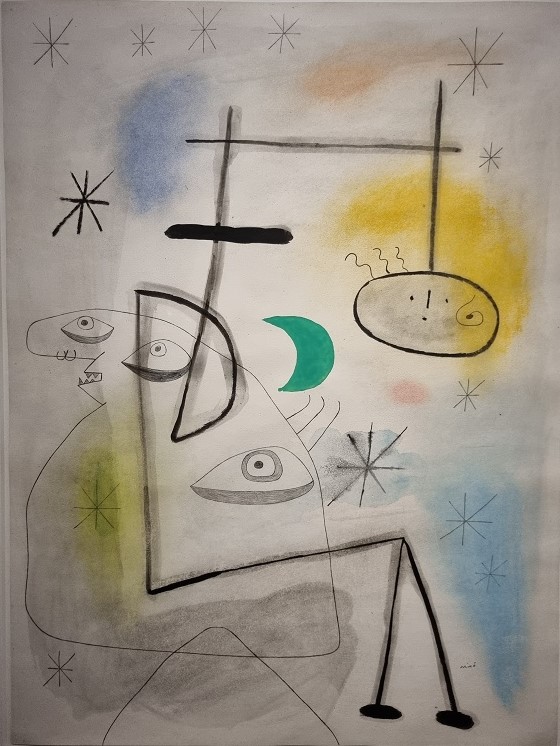
The natural world was another source for his imagination. Night skies, constellations, birds and animals frequently appear in his works (Figures Before the Moon, 1942, pictured). A long interest in Eastern art was accentuated by visits to Japan in the 1960s; the country’s spirituality and calligraphy both proving influential. Since the 1920s, Miró had often fused words with images.
A final room is devoted to sculpture and ceramics, largely in a primitive style. They show how the medium enabled him to further pursue minimalism.
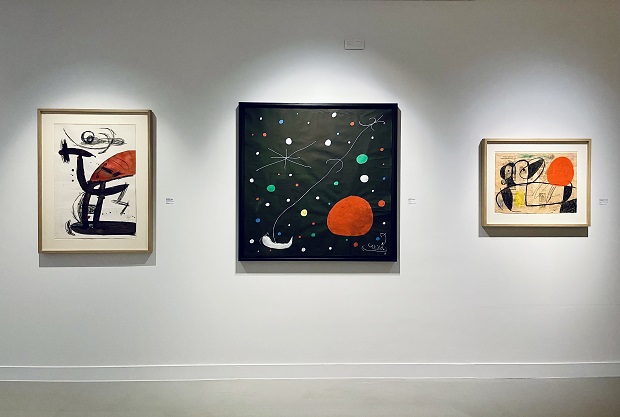
If largely defined as a surrealist, this exhibition – the first in Belgium since a retrospective at Bozar in 1956 – amply proves that Miró was in many ways an undefinable artists.
For visitors, two parallel shows are on display at Mons’ modern art space. In The Wanderer and his Shadow, artist Xavier Noiret-Thomé shows his own large-scale paintings alongside works he has personally selected from the BAM’s collection. Artist Romina Remmo also presents Minutia. Direction to the detail.
Joan Miró: The Essence of Past and Present Things.
Until 8 January
BAM (Beaux-Arts Mons)
Rue Neuve
Mons












